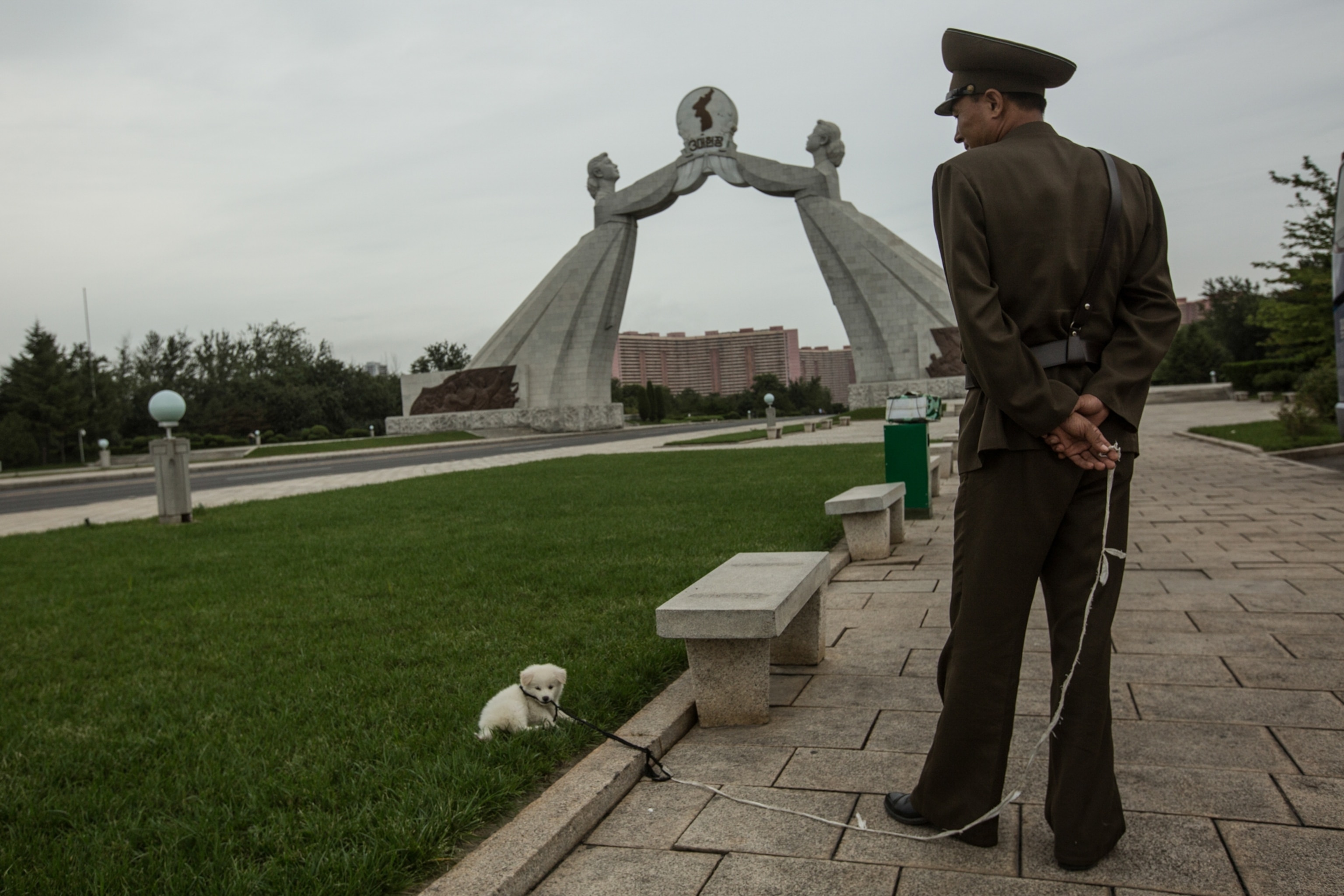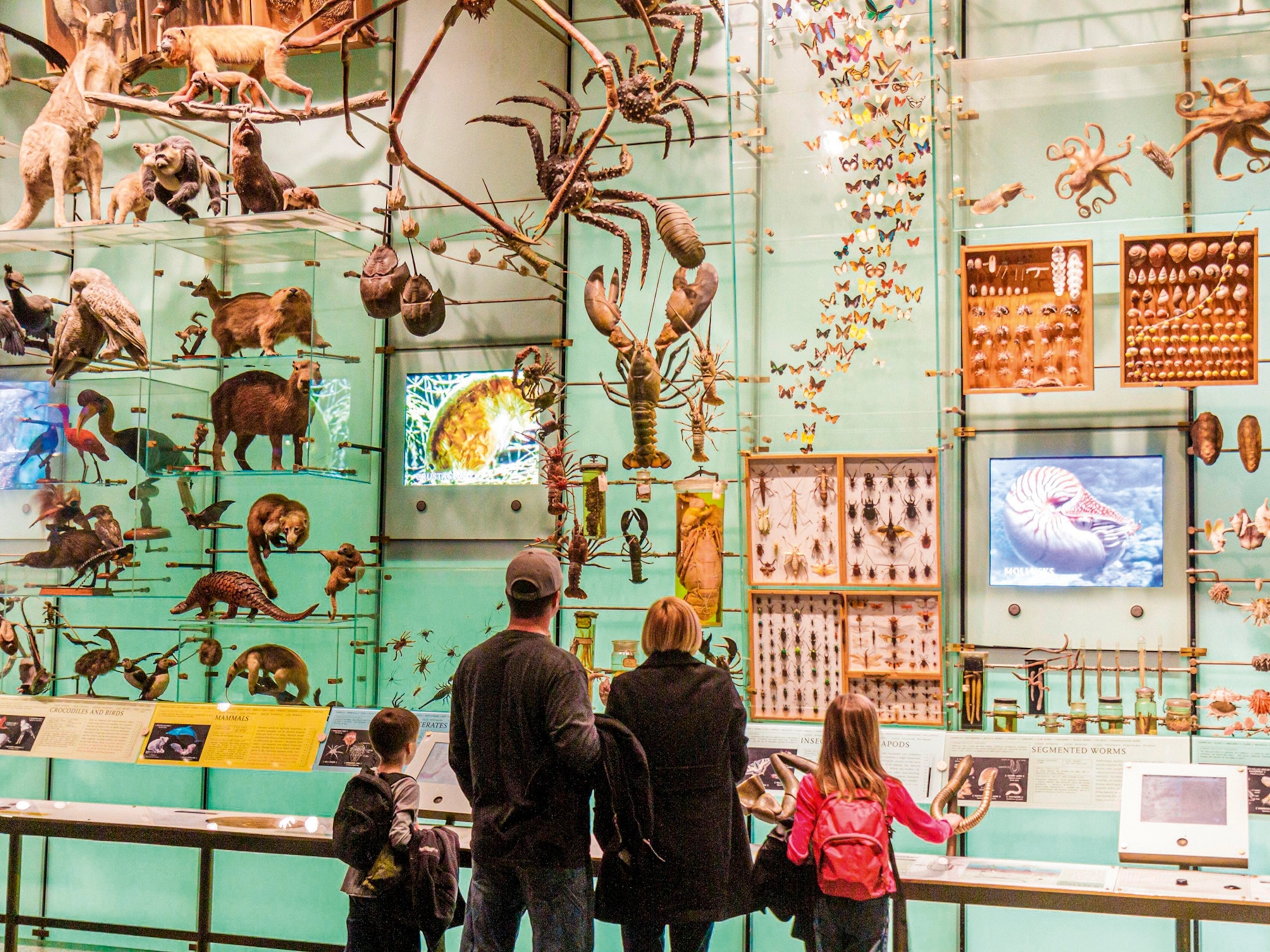These Are the Last Americans to Visit North Korea
Before the United States banned travelers from visiting the closed nation, a small group rushed to get there for one last tour.
For all of its restrictive laws, its harsh ruler, and its reputation as the Hermit Kingdom, North Korea has long been open to visitors. For years, Chinese tour companies have brought foreigners into the country—including roughly 1,000 Americans per year—for a curated tour of daily North Korean life. Americans have been able to spend time at North Korean amusement parks, schools, and subway stations. Almost all left without incident.
But that changed after the June 19 death of Otto Warmbier, the American student detained in Pyongyang for stealing a poster from a hotel. Citing Warmbier’s inhumane treatment––and amid the country’s deteriorating relationship with Washington over the regime’s nuclear weapons ambitions––the U.S. State Department restricted all U.S. passports from being used to travel to North Korea. (The regime called the ban a “vile measure.”)
Before the new travel ban took effect on September 1, photojournalist David Guttenfelder joined a group of six American tourists eager to see inside the world’s most secretive nation. For almost 20 years, Guttenfelder has been one of the few western journalists allowed inside North Korea, making nearly 50 trips, some while on assignment for National Geographic, to document its political and military situation.
All of the travelers said they were motivated by intense curiosity. Brad Yoon, an Uber driver from California, had never traveled abroad before; he told his parents he was going to China so they wouldn’t worry. Amy Kang, a Korean-American, went with her husband in hopes of learning about her heritage.
“It was completely different from anything I was expecting,” Kang said. After all the horror stories she had heard about the repressive regime and the widespread lack of freedoms, she was surprised to find in Pyongyang an element of normality: people who had jobs, families, and who could name their favorite American movies.
Of course, being a tourist meant staying in a bubble of predictability and calm. There were no sudden movements, no surprises.


There were planned visits to a grocery store, a bowling alley, a brewery, and a circus. No one mentioned the country’s nuclear threats, or Supreme Leader Kim Jong-Un’s war of words with U.S. President Donald Trump. When the North Korean military launched a missile over Japan in late August that drew international rebuke, Guttenfelder learned of it on Twitter via his cell phone’s limited wireless coverage. No one else around him, including his handlers, had any idea.
One could, however, sense the tension of potential military conflict. Guttenfelder, who has visited North Korea during four presidential administrations, observed that in the Trump era, the people seemed to be tense, but not as tense as he'd seen in the past. On the roads there were more propaganda billboards than usual bashing the United States. At a children's play place in the airport, an old piece of art showing children building missiles out of blocks seemed to fit the current tensions.
The tour included a visit to the Demilitarized Zone (DMZ), the area straddling the 38th Parallel where North and South Korean soldiers traditionally stare stone-faced at each other across a courtyard bisecting North and South.
The threat of war at any moment has always kept the two militaries prepared to fight. But to the American tourists, the impending travel ban also brought an urgency to buy keepsakes. At various stores selling trinkets, the Americans and other foreign tourists clamored over stamps, art, ginseng products, and North Korean alcohol. One especially popular souvenir: anti-American propaganda posters.






